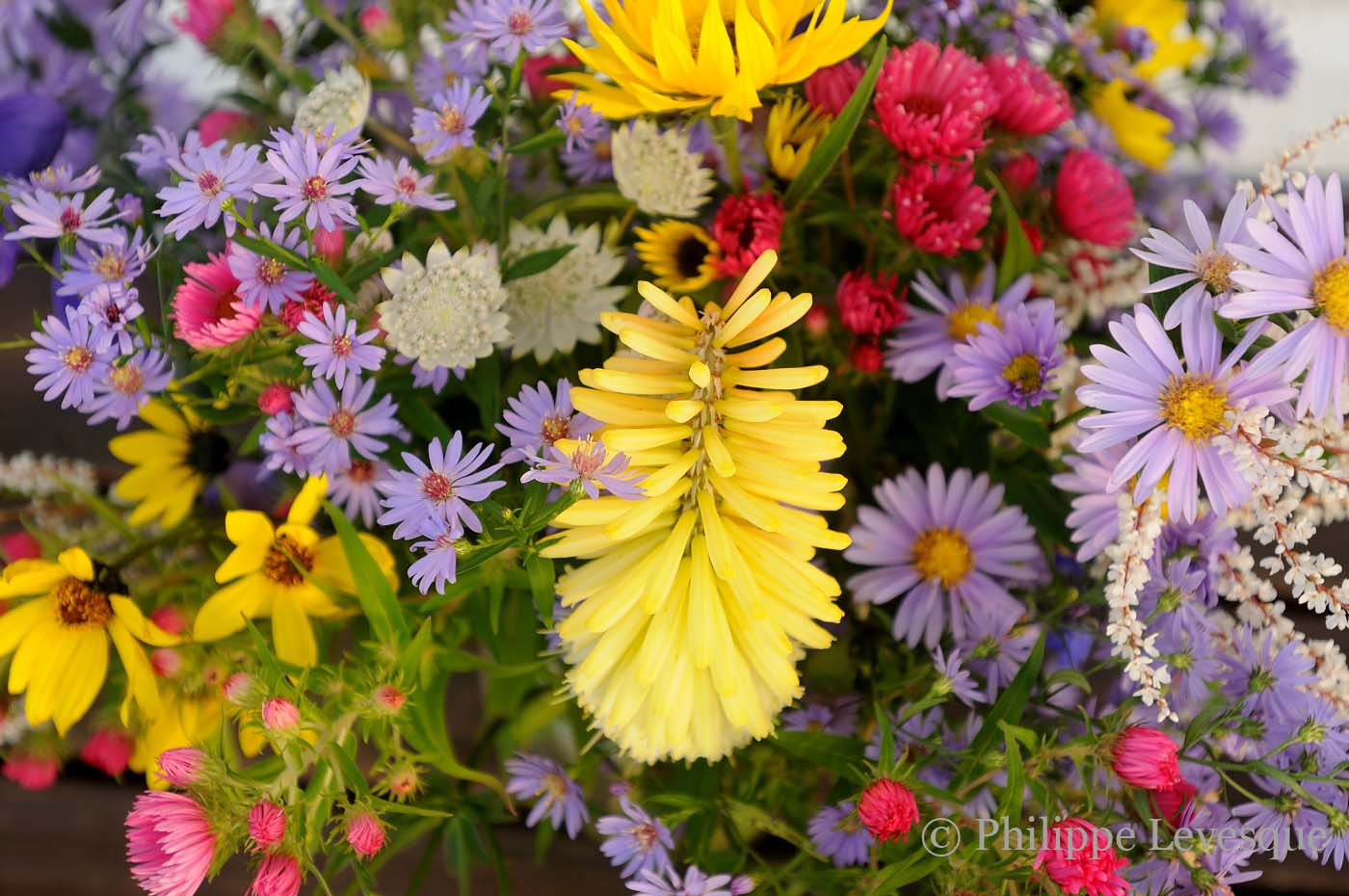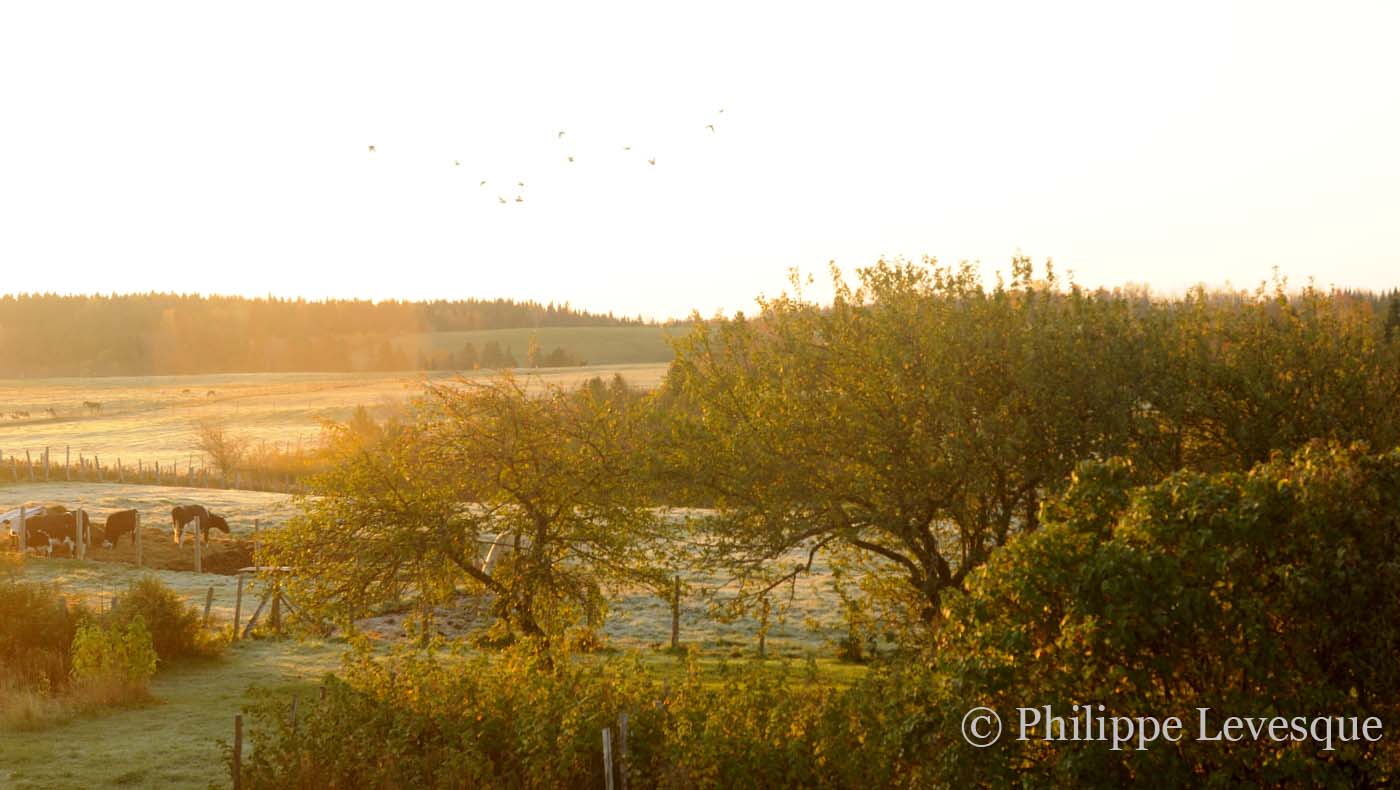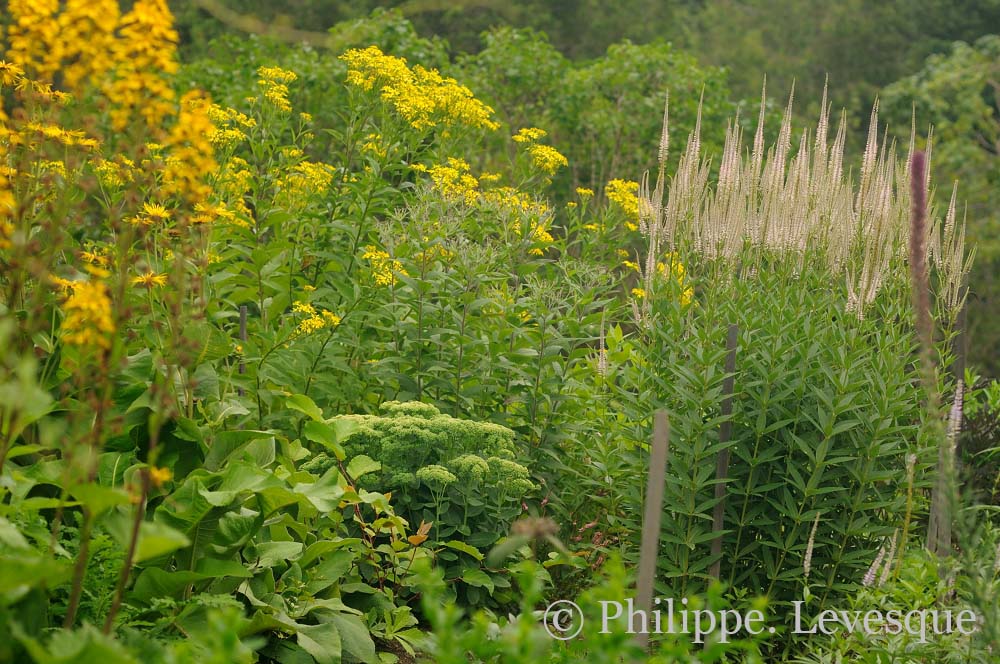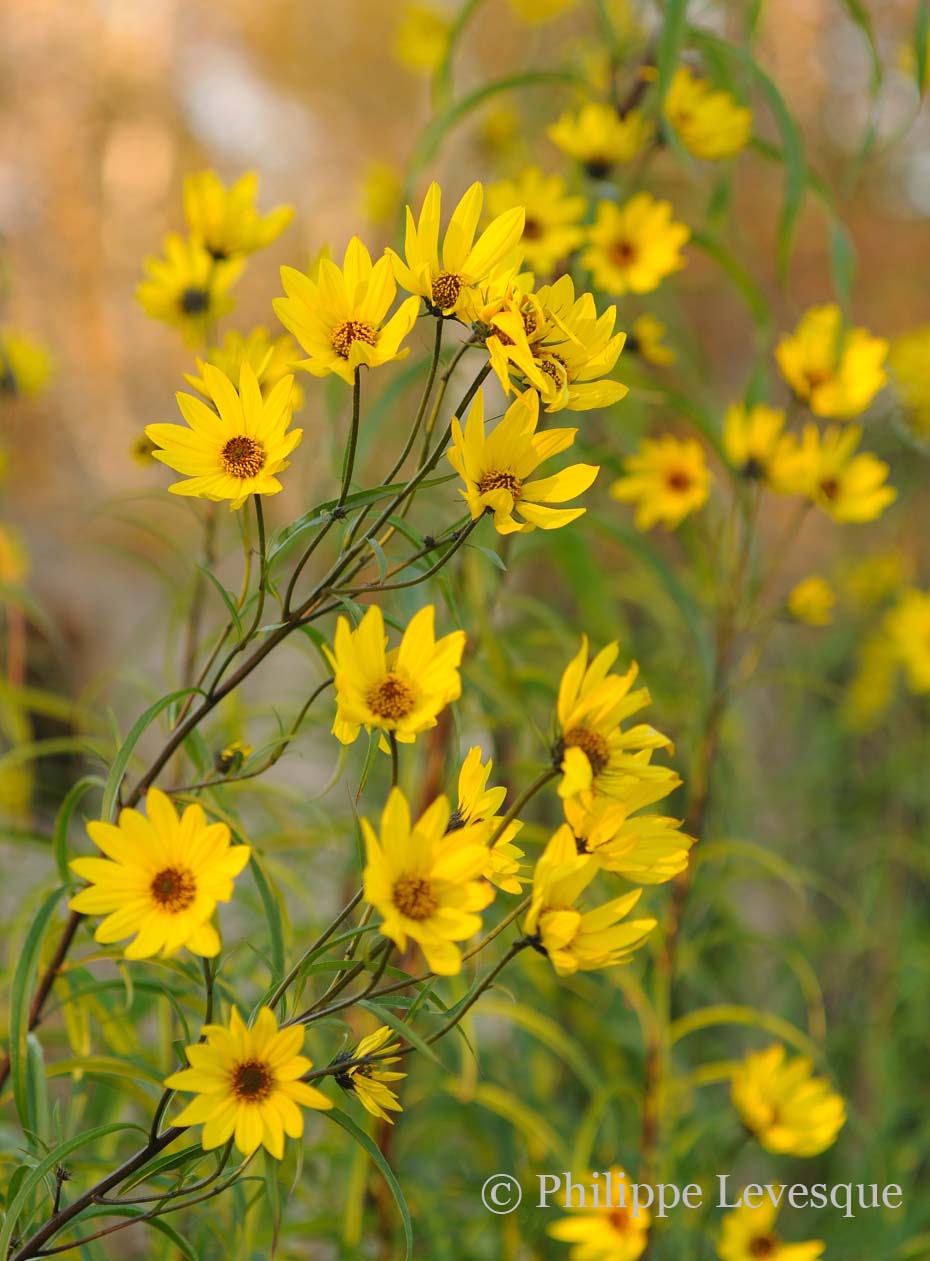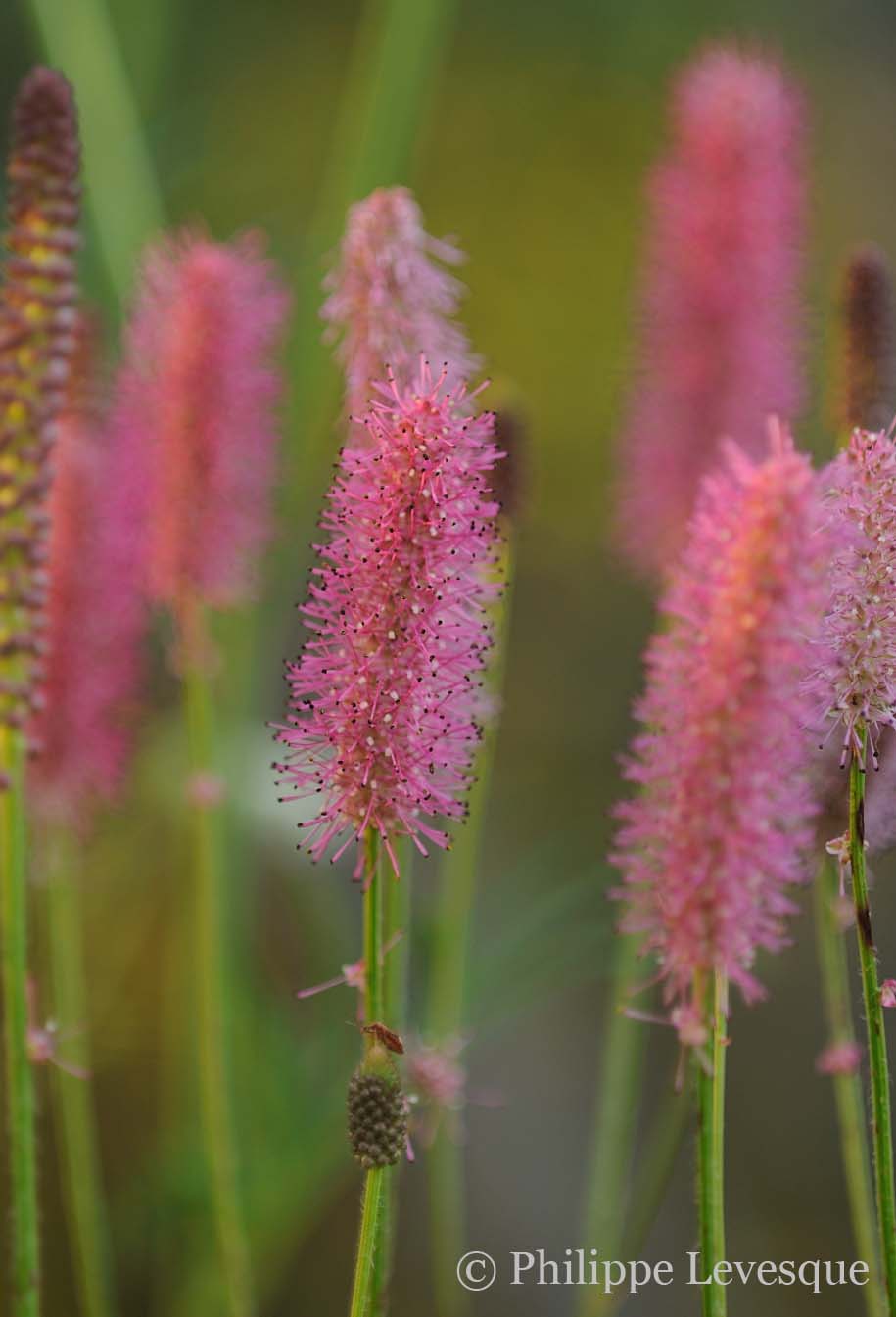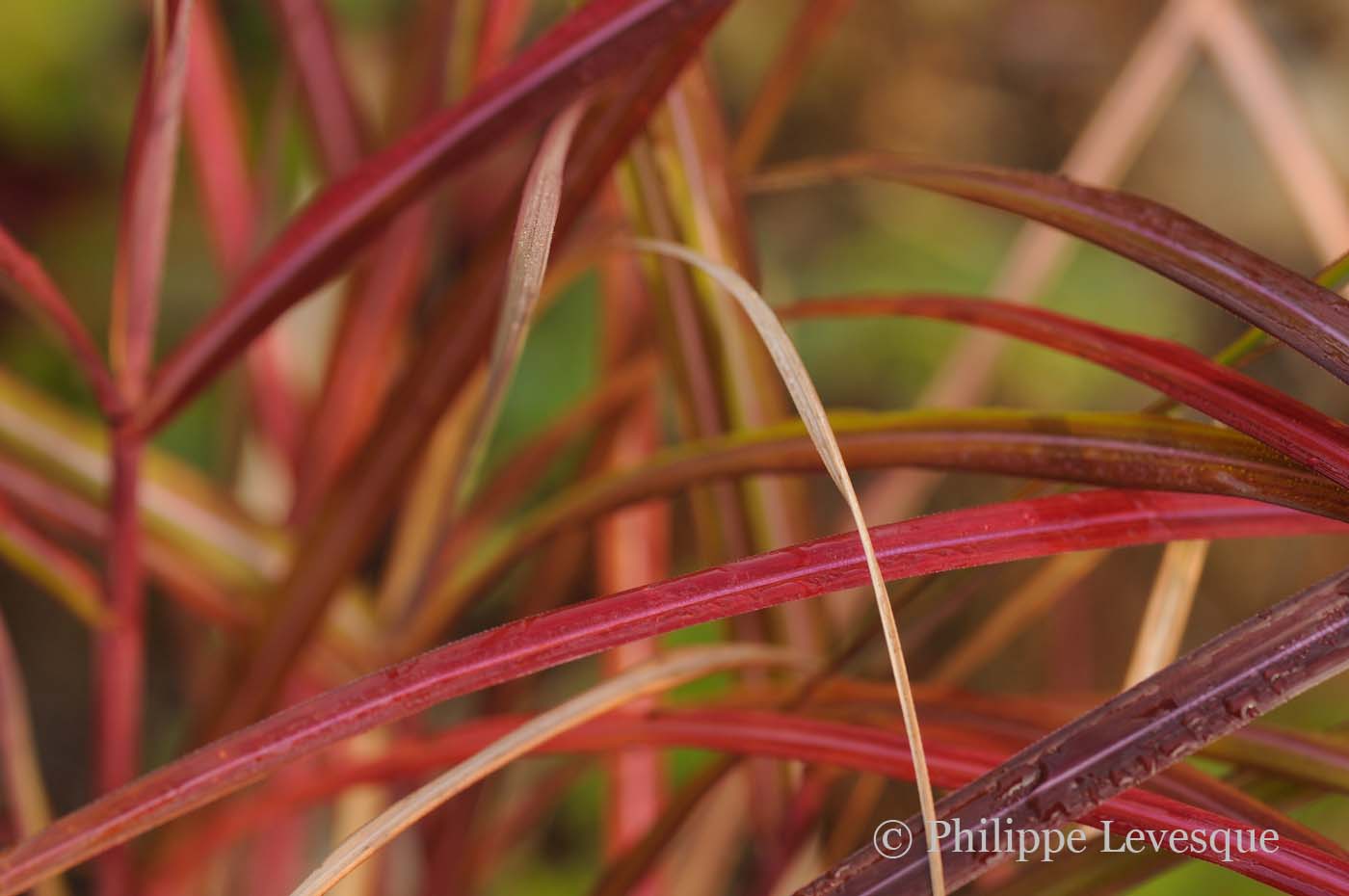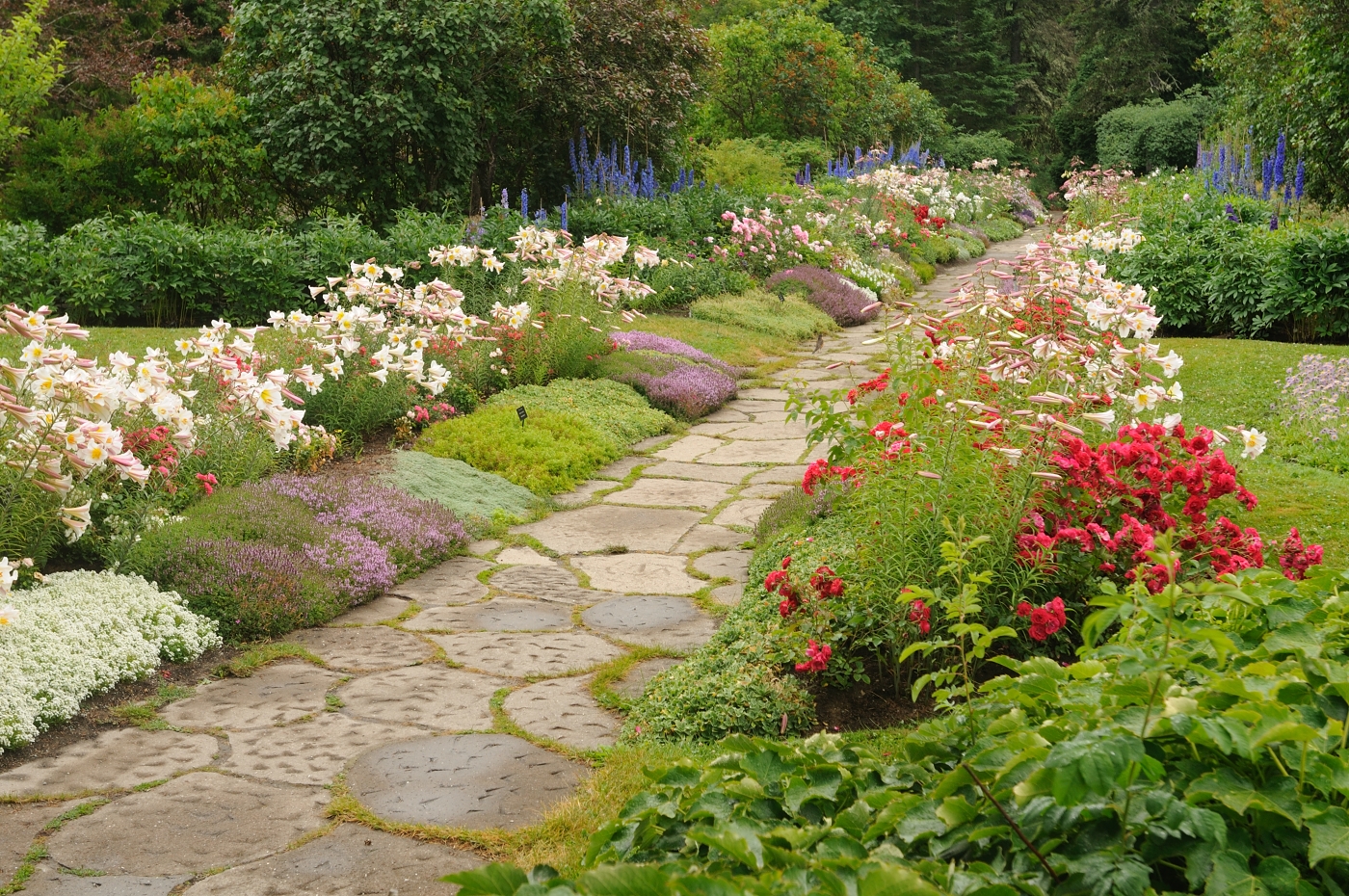5-10-5: Philippe Lévesque of Balmoral Gardens
Perhaps one of the youngest, if not the most well-traveled nurserymen in North America, French-Canadian Philippe Lévesque operates a small-scale specialist nursery, Balmoral Gardens, northeast of Montreal, Quebec. Philippe carefully built up his nursery stock by importing and propagating plants from his North American and European forays. The stock includes herbaceous perennial and ornamental grass cultivars not yet widely distributed and uncommon in U.S., as well as untested for their full ornamental worthiness in warmer regions. Although the growing season is unmercifully short, herbaceous perennials perform beautifully in the warm days and cool nights, and combinations not achievable in warmer, milder climates can be created. In addition to his nursery, Philippe maintains a photographic library, Macrophylla Photography and his photographs are featured here.
Hello and can you introduce yourself?
Philippe Lévesque, Canadian gardener and owner of Balmoral Gardens, in New Brunswick, Canada
The arts or horticulture?
Aren't the two intertwined? If I must choose, horticulture because I don't have a very artistic hand and I could live without man-made things but not nature.
Tell us a bit about yourself and your background…
I grew up here in Northern New Brunswick in a very ordinary place, went to Guelph University to study botany, which I hated. So I went to garden in England for two years, came back, set up my nursery which was called Macrophylla, closed it down 5 years later to go back to England, lived there for another 6 years, then moved to Australia for a year before coming back here. I have a certificate in horticulture from the RHS, but got that only recently. I am mainly self-taught in gardening as it's a great passion that has always animated me.
Do you remember your first gardening memory?
Father rototilling the veg garden in May and then us planting peas and beans when I was 6.
What does a typical day consist of?
A day at the nursery (when I am not at clients' homes landscaping) is spent differently every single day, depending on the season etc. but it always starts off with a walk around the gardens to see how the plants are doing and to see what's come up in bloom, often with my camera in hand (if the light is kind enough). I usually weed as I go along too, so that can easily take an hour. Then I usually have something to plant in the ground or in pots, or plants needing dividing. I seem to spend an awful lot of time wheelbarrowing manure! Mulching and watering is mostly mum (my business partner)'s job. If it's a hot day, we work at the potting shed in the shade pricking out seedlings or potting plants. A typical day is not without many hot drinks, chocolate and cake!
You have gardened in England and Australia (Queensland). How have your overseas experience altered your perspectives on gardening?
Different climates bring different challenges to the gardener, and it made me realize that no matter where one is, it's not acquired without lots of work. Gardening in the tropics did make me appreciate the intensity of the temperate seasons and gardening in Britain made me appreciate the advantage of a deep blanket of snow. I don't see the climate as much a limitation anymore (although I wouldn't mind living in a place where I could grow quince trees!).
Your plants look incredibly healthy! What is your secret behind propagating and producing healthy beautiful plants for your clients?
We grow our plants in the ground and only pot them up as needed. It's much easier to grow a vigorous plant in the garden than in the artifical medium of a plastic pot. Our soil here is varied and we try to put the right plant in the right soil. No point planting primulas in our sandy hilltop garden, when they relish the riverside beds and vice versa, Perovskia (Russian sage) doesn't like our cool summer combined with cold winters, and we can only grow them well in our rocky sunny border. Basic recipe in all cases is lots of horse manure before planting and lots of water immediately afterwards. Otherwise a seaweed and woodchip mulch, nothing else. We water only when the plants are beginning to show signs of stress, but then we drench them.
What are some of the specific cold-climate challenges you face up north? I remember how devastated you were one year when the majority of your nursery stock died during the lack of snow insulation.
The worst challenge is not growing the plants at all (although that fateful winter of 2004 taught us to protect well the more tender plants like Kniphofia, Persicaria, and Euphorbia without fail with dead leaves and conifer branches, and not hope too much from woody plants as we don't grow that many at all other than a few rare hardy roses and willows). The problem is from hasty gardeners in spring! Garden centres and people at plant fairs want their plants ready grown by May - our garden is usually under snow until at least April 20th, we can't even access the plants till then! We only have one greenhouse where we can force only a limited number of plants into growth in the spring, so I guess we sometimes miss sales because of our lateness. Our short summers also means that we have to be very organized when we take cuttings or divide.
Can you name some of your favorite late season perennials and grasses?
Perennials
Aconitum carmichaellii 'Spätlese' because it's a nice pale colour in contrast to 'Barker's Variety' that has the largest darkest flowers of all. I like them both because they are not so stiff like other A. carmichaelii and have healthy glossy foliage.
Aster 'Little Carlow' - the best aster because it is very floriferous, has nice glossy foliage that never gets ill, and is the nicest colour. Aster 'Coombe Fishacre' - when it flowers, it's a lavender-pink mound and not ill either.
Helianthus 'Dorian Roxburgh' (hybrid between H. ‘Lemon Queen’ and H. giganteus ‘Sheila’s Sunshine’) - it's a nice tall and elegant plant in a delicate shade of yellow. Helianthus 'Orgyalis' - Tall and strong and full of large flowers on burgundy stems over lovely narrow foliage, what more could I want from a sunflower?!
Kniphofia 'Mermaiden' - just the most amazing green colour and size! Kniphofia 'Percy's Pride' – a gift from British plantsman John Grimshaw and it's a good flowerer, even here where other Kniphofias can be shy Kniphofia 'Lord Roberts' - a large variety in a shade that is VERY effective, dark, a strong accent. Kniphofia 'Rich Echoes' – wonderful as well and flowers a little earlier.
Persicaria amplexicaulis 'Jo and Guido's Form' because it's a delicious shade of pink (although I do find it a bit weak) Persicaria amplexicaulis 'Taurus' - the most vibrant red ever and it flowers on and on. Persicaria amplexicaulis 'Orangefield' because it's different from the others, and a colour that beckons the eye. Neither pink, nor orange, a special look I find endearing. I guess I should also put 'Rosea' even if it's more common because it is just the best of the lot. Has been in bloom for three months now. Persicaria polystachya - it's carefree, and just the most generous white flower in autumn. I love the combination of orange bamboo-like stems and pure white lace. Delicate but strong at the same time.
Sanguisorba tenuifolia 'Stand Up Comedian' - it's the strongest white, never flops like other tall white forms and I like the quirky name, Sanguisorba 'Blackthorn' too because it's strong but also because it has large conspicuous bottlebrushes, more showy than most late Sanguisorbas.
Vernonia gigantea 'Purple Pillar', just the biggest show stopper for its size and colour. 'Mammuth' is more manageable and just as good actually. Vernonia lettermanii - the foliage, wow!
Grasses
Calamagrostis x acutiflora 'Waldenbuch' - more elegant and not so stiff as 'Karl Foerster' Also a warmer golden yellow.
Miscanthus sinensis 'Berlin' - golden flowers that shine, unique Miscanthus sinensis 'Huron Sunrise' - the most floriferous Miscanthus sinensis 'November Sunset' for the vibrant red/purple foliage
Molinia caerulea ssp. arundinacea 'Cordoba' – the most elegant of tall sorts and 'Variegata' - the most beautifully symmetrical plant one could wish for.
Schizachyrium scoparium 'Fred's Red' - a selection made by my friend, does not flop like 'The Blues' or the other American selections and is the most striking red colour in the autumn.
Sorghastrum nutans 'Sioux Blue' for the blue foliage/golden flower combination. I just love Sorghastrum anyway!
How would you describe the Philippe aesthetic?
Organic! Hewn but, I hope, genuine. Simple, clean lines are good but nothing minimalist (how so dull!). Bold accents, stone, wood, water, bright light, vibrant colours in the right place.
What specific sources of creative inspiration do you often turn to?
Nature is my first inspiration, then British and Japanese gardens, abstract paintings for colour combinations, magazines, the web. I don't often look for inspiration, it's always all around me, and in these days of media's frenzy, it's easy to be overwhelmed!
What garden, private or public, inspires you?
Just one? Impossible! So many interesting ones! Reford Gardens near here is special, beautiful and a well-kept secret.
What would be your desert island plant and piece of art be?
The plant would have to be amaranth, because it's beautiful, edible, useful and resilient. A piece of art would be the indigo batik I bought in Indonesia to wear or to shade myself.
And what grain of wisdom can you proffer to readers interested in gardening and the natural world?
Go organic!
What are you looking forward to?
Next spring of course! Being independent from petrol, having my own farm, my next visit to other nurseries, my piano being delivered, and my cake coming out of the oven!
Thank you, Philippe, for the interview!
~Eric



